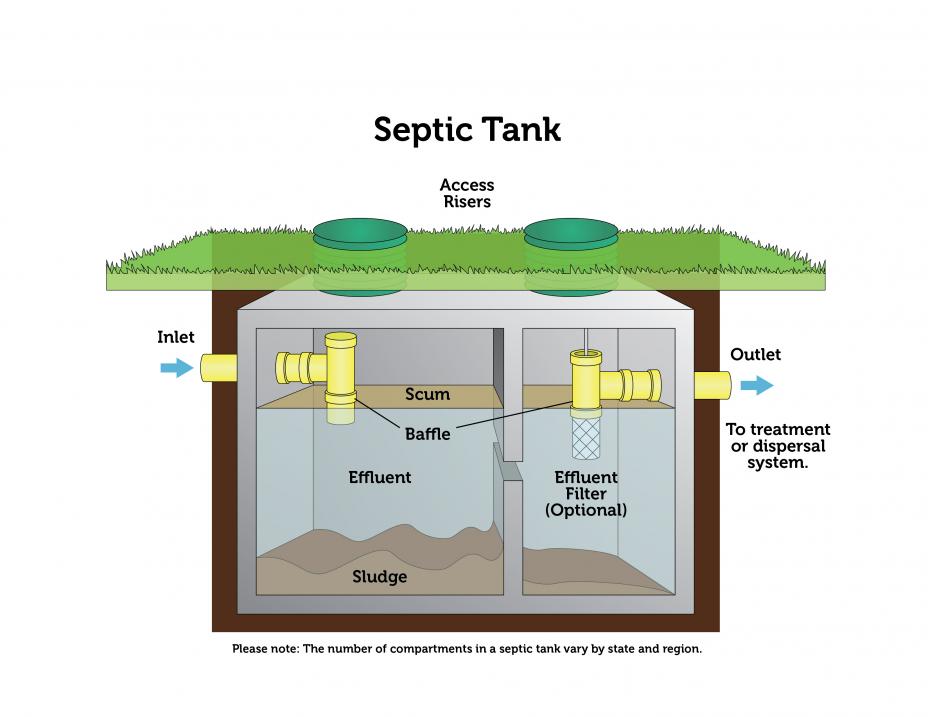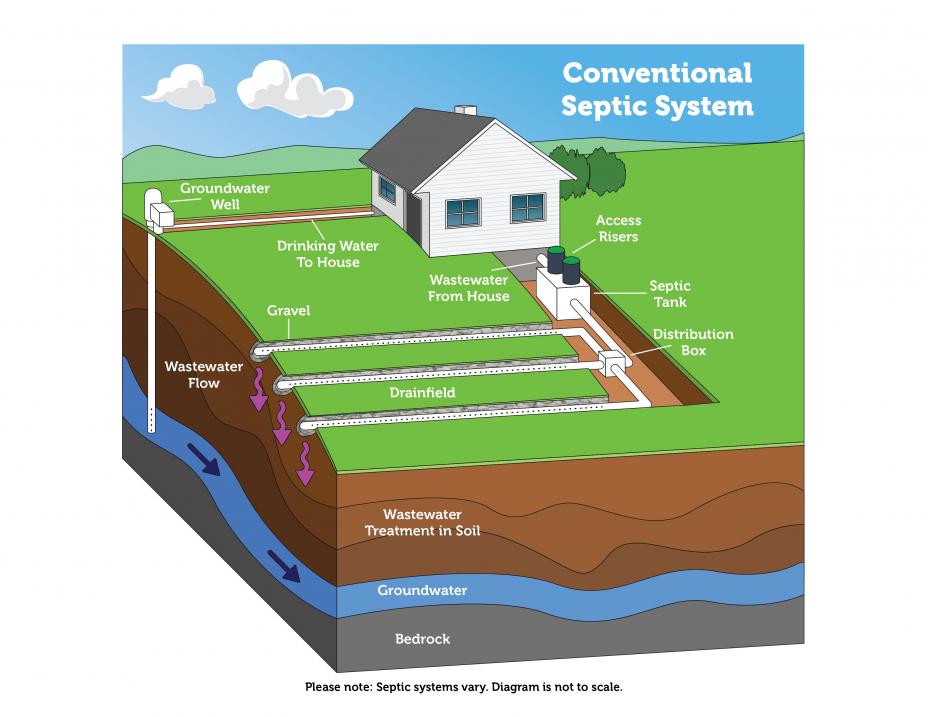Responsible septic maintenance is the key to protecting our water, health, and wildlife here in Montana! 40-50% of homes in Montana treat wastewater on-site with a septic system instead of connecting to a community wastewater treatment plant. Because of the large amount of septic systems in Montana, septic leachate, or the wastewater that is discharged after treatment of solids in a septic tank, is an environmental and health issue of concern. However, septic systems that are properly installed, sited, maintained and inspected greatly reduce this source of pollution. This is where you play a valuable role in the solution!
Septic System Anatomy
In your home, wastewater runs down the drain after you take a shower, do laundry, wash dishes and flush the toilet. Here’s what happens after that
- This wastewater travels through a sewer line to your septic tank.
- There, heavy solids sink to the bottom and become known as sludge. Lighter solids such as grease float to the top as “scum.” Bacteria digest some of these solids, but regular pumping is necessary to remove the remaining solids so they don’t backup the system.
- The remaining wastewater travels to a second compartment of the tank where sometimes there is an effluent filter.
- From there, it is discharged through the outlet pipe into the drain field (or in some systems, onto an elevated sand mound) to be treated. Water gradually percolates into the soil, where it is naturally treated.
- Finally, the treated water seeps down into the groundwater where it will eventually either flow back into a river or stream, or get pumped out of the aquifer by a well and used again for human consumption.
Nonpoint Source Pollution
- A nonpoint source pollutant is one where it’s exact location source is not clear, compared to point source pollution where the source can be pinpointed, as with a pipe expelling factory waste directly into a river.
- Nonpoint sources are more difficult to regulate, but contribute a significant amount to pollution.
- Wastewater from your septic system that leaches into groundwater and/or surface water is called septic leachate and is considered a nonpoint source pollutant
Why does this matter?
Your wastewater may be contaminated with disease causing pathogens harmful to human health, as well as nutrients such as nitrogen and phosphorus. Excess nutrient loading in surface waters is shown to cause algal blooms. The fast-growing algae uses up dissolved oxygen, kills fish and other aquatic life, and reduces the recreational value of waterways. Septic systems are a particular source of concern for nutrient loading in the Flathead Basin. In some areas such as Spring Creek (tributary to Ashley Creek, west of Kalispell), septic systems account for 50% of the total nitrogen load!

You can help be part of the solution, while saving money!
Regular maintenance can help your system last longer and save you money! Clean the effluent filter every 6 months, inspect the solids in your system each year, and have your system pumped every 3-5 years.
Even properly functioning septic systems have a maximum lifespan of 15-30 years. Aging septic systems often malfunction and contribute the most to nonpoint pollution. This means wastewater carrying harmful viruses, bacteria and nutrients can make their way into the groundwater that supplies your well and could make your family sick. Make sure to replace your system when it gets too old to protect your family and Montana’s waterways!


